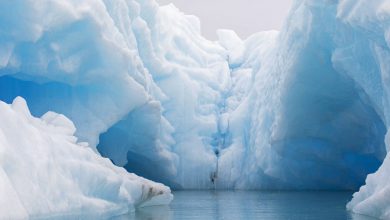AllAsia and OceaniaOngoing
Territorial Dispute of the Spratly Islands in the South China Sea
The Spratly Islands consist of more than 100 tiny land masses lush in resources that are being claimed by China despite territorial claims by Taiwan, Malaysia Vietnam and the Philippines.

The Spratly Islands are a diverse island chain home to more than 100 islands and reefs including banks and cays. They’re located in the disputed South China Sea, and contain an incredibly rich ecosystem containing 11 billion barrels of oil, 190 trillion cubic feet of natural gas and home to 10% of the world’s fisheries. More importantly, over 30% of global shipping trade passes through this region, leading to the economic markets of Southeast Asia. Vietnam, People’s Republic of China (PRC), the Republic of China (ROC), the Philippines, Malaysia and Brunei all claim a part of the disputed Spratly Islands. Most of the countries occupy maritime areas with the exception of Brunei.
Historic records from World War II state that the islands were inhabited during several periods by Vietnamese and Chinese fishermen. In 1956, the first record of an individual claiming rights to the islands, was born. Tomas Cloma Senior, a Filipino explorer overtook an island and named it: “Free Territory of Freedomland”. Research shows that the human presence started evolving almost 50,000 years ago in the Tabon Caves of Palawan. Speaking historically, several tribes of people have occupied in the Spratly Islands between 600 BC to 3 BC.
Why are the Spratly Islands so Controversial?
Over the years, the Spratly Islands have been a controversial topic, even considered the most disputed archipelago in the world. Dispersed over 400,000 square kilometers of water, these contested islands might appear meaningless and insignificant, albeit they are a part of an ongoing controversy among almost 6 independent nations.
The United Nations Convention on the Laws of the Sea (UNCLOS) claims that a country’s territorial waters extend 200 miles off of their physical shore. This area is called the Exclusive Economic Zone (EEZ), and suggests that each country has the right to own all the natural resources and trade within their respective EEZ under the right of sovereign territory. For example, all oil discovered under the West Philippines will be respectively theirs to use. The UN maritime law entails that each country in South China Sea region uses this 200 nautical mile EEZ agreement to determine its claims.
China seems to be unbothered by international law. The People’s Republic of China has been constructing man-made islands within the countries’ EEZs. The Chinese claim that the South China Sea is entirely theirs despite UNCLOS because of their historic connection to the region. This dates back to naval expeditions in the 15th century – where they marked their territorial claims with a nine-dash line that circumscribes about 90% of the South China Sea.
When the idea of the 200 nautical mile EEZ emerged in 1973, China refused to follow and instead abided by their own terms. The most pressing issue here is as follows: any country who claims the Spratly Islands can stretch their EEZs to include them, subsequently receiving unfettered access to their surrounding territories. China’s presence in the region serves as a significant threat to the smaller countries with weaker militaries in and around South East Asia. The artificial islands being built in the South China Sea have since been militarized, bringing the dispute to an alarming and threatening place.
Disputed Reefs and Islands
The Spratly Islands are currently a remote, uninhabited cluster of islands with claims by China, Vietnam, the Philippines and Malaysia. The islands are situated at the heart of the South China Sea making it a hotbed for China to claim their territory.
Ayungin Shoal is located just 105 nautical miles from the Philippines where China implemented their “Cabbage Strategy,” employing military ships that encase the island. As if the Chinese were wrapping leaves on a cabbage, they also wrapped this area with their daunting naval fleet.
The Scarborough Shoal, located 100 nautical miles away from Zambales in the Philippines, is also severely exploited. The fishermen living in this region who work closely with the Philippine Navy are being forced to leave their fishing grounds.
Swallow Reef, the eleventh largest Spratly Island, is currently part of Malaysia’s EEZ which China has also claimed. It was occupied since 1983 and is currently a popular diving site due to its strategic location.
There are many more islands and reefs that were exploited by China and the numbers keep growing in size. It’s important to be aware of this urgent geopolitical issue and to keep a close watch as the dispute rages on.




